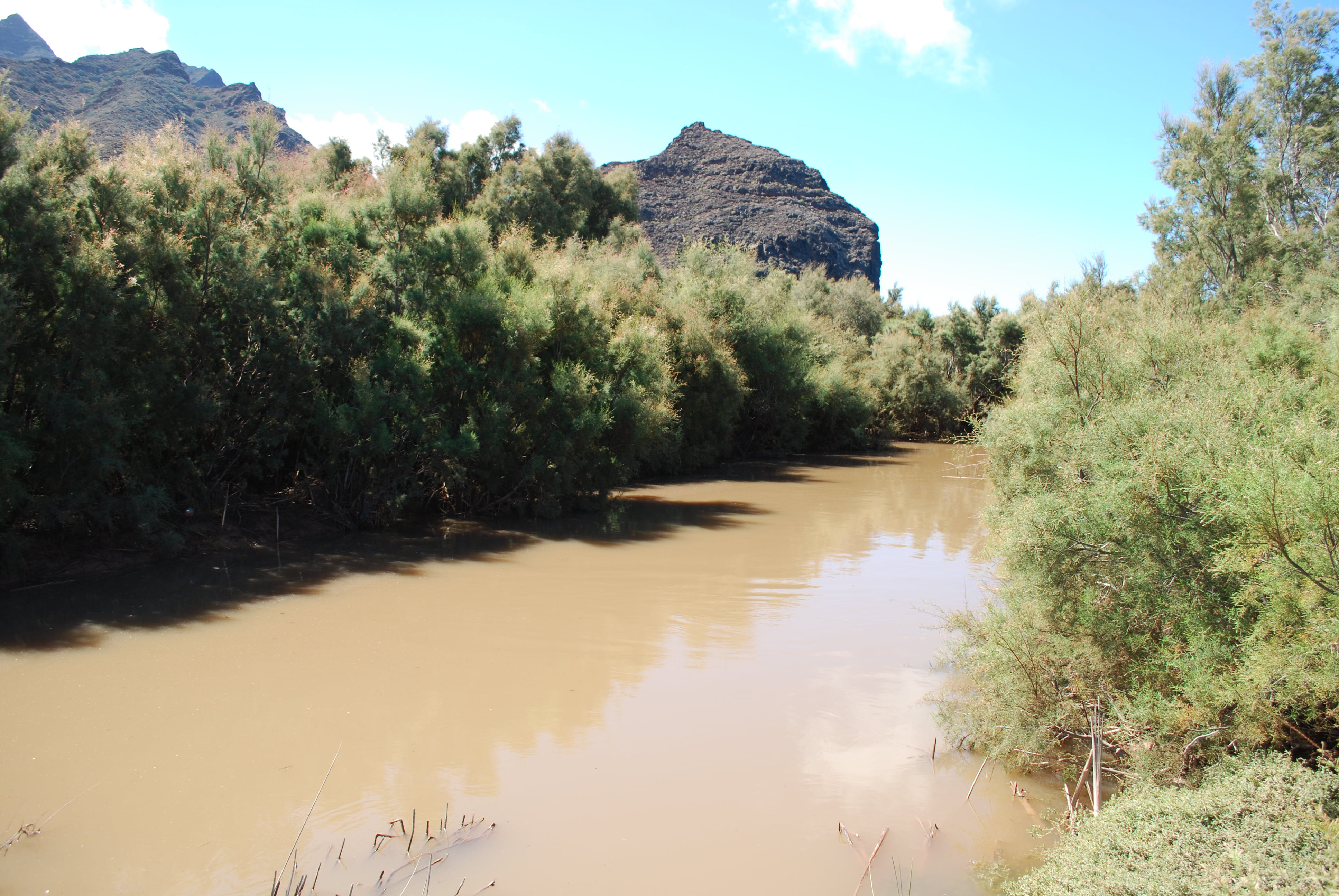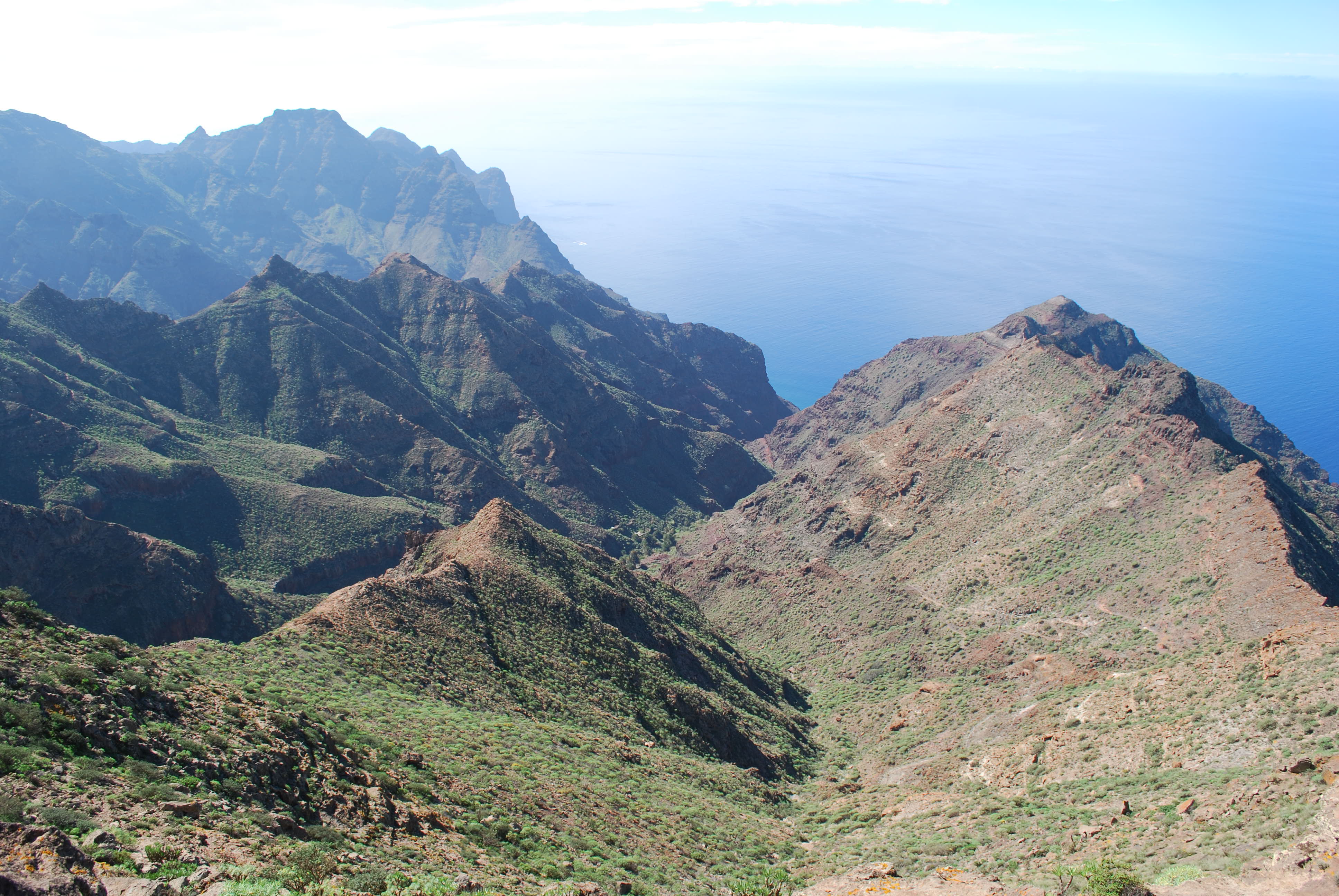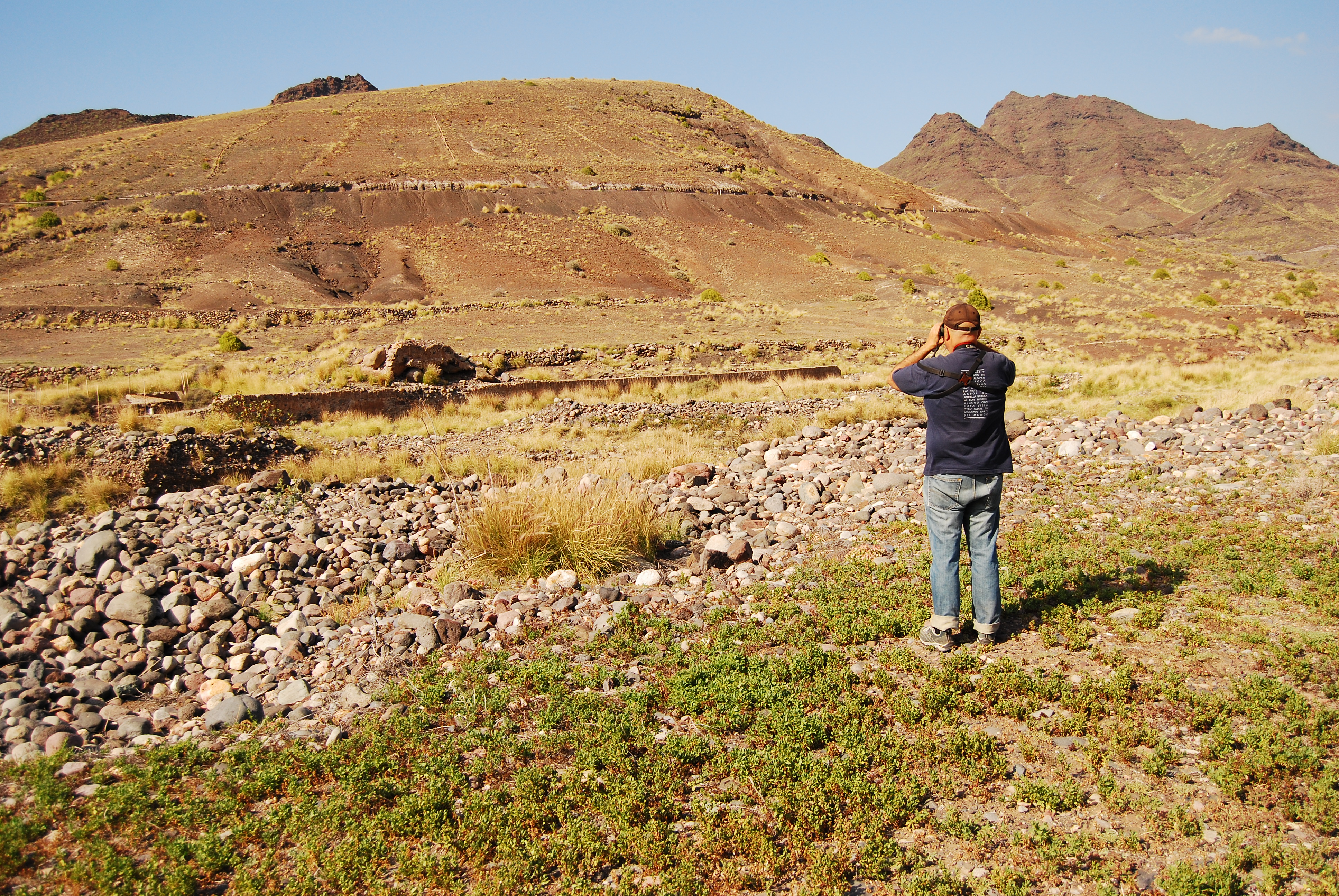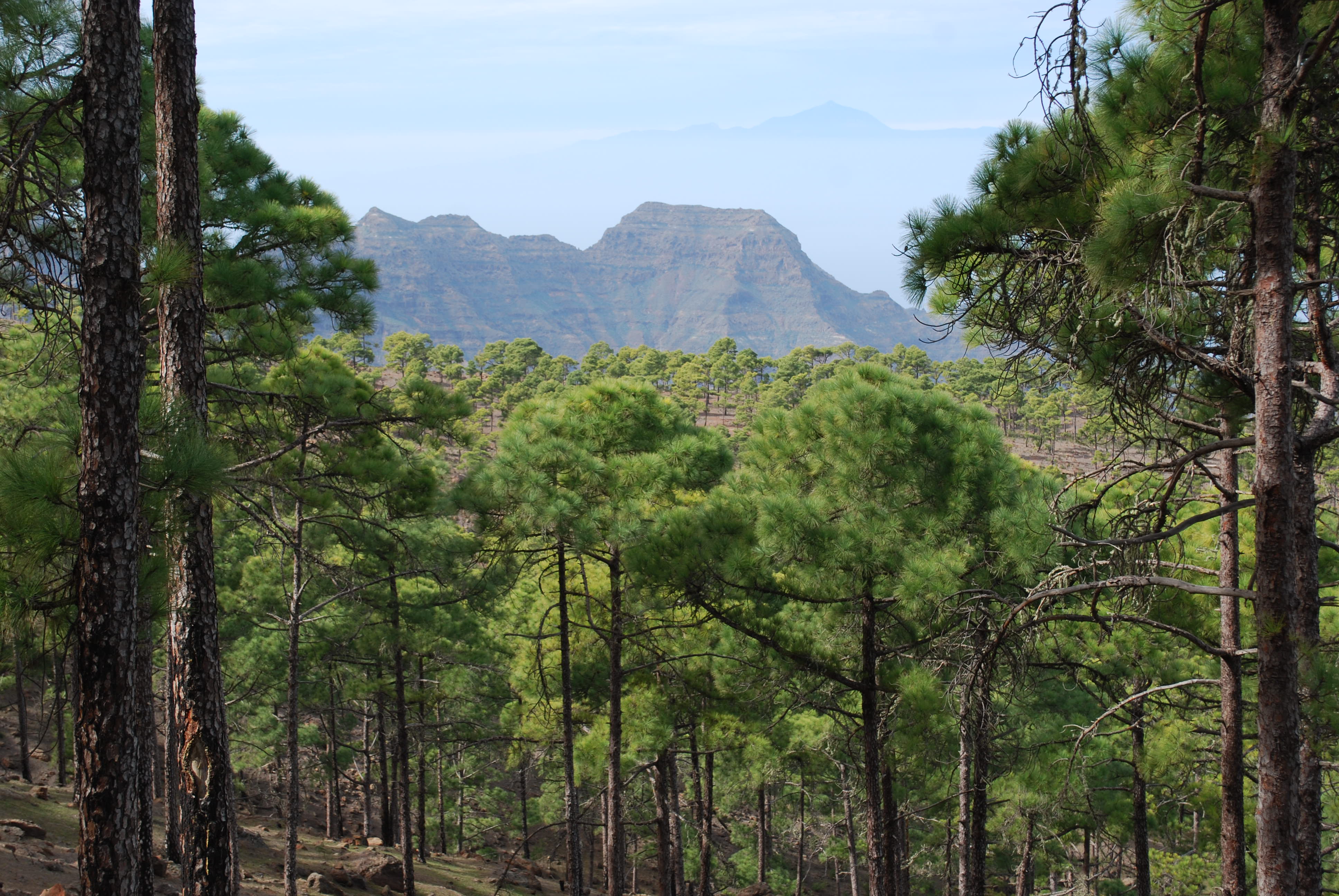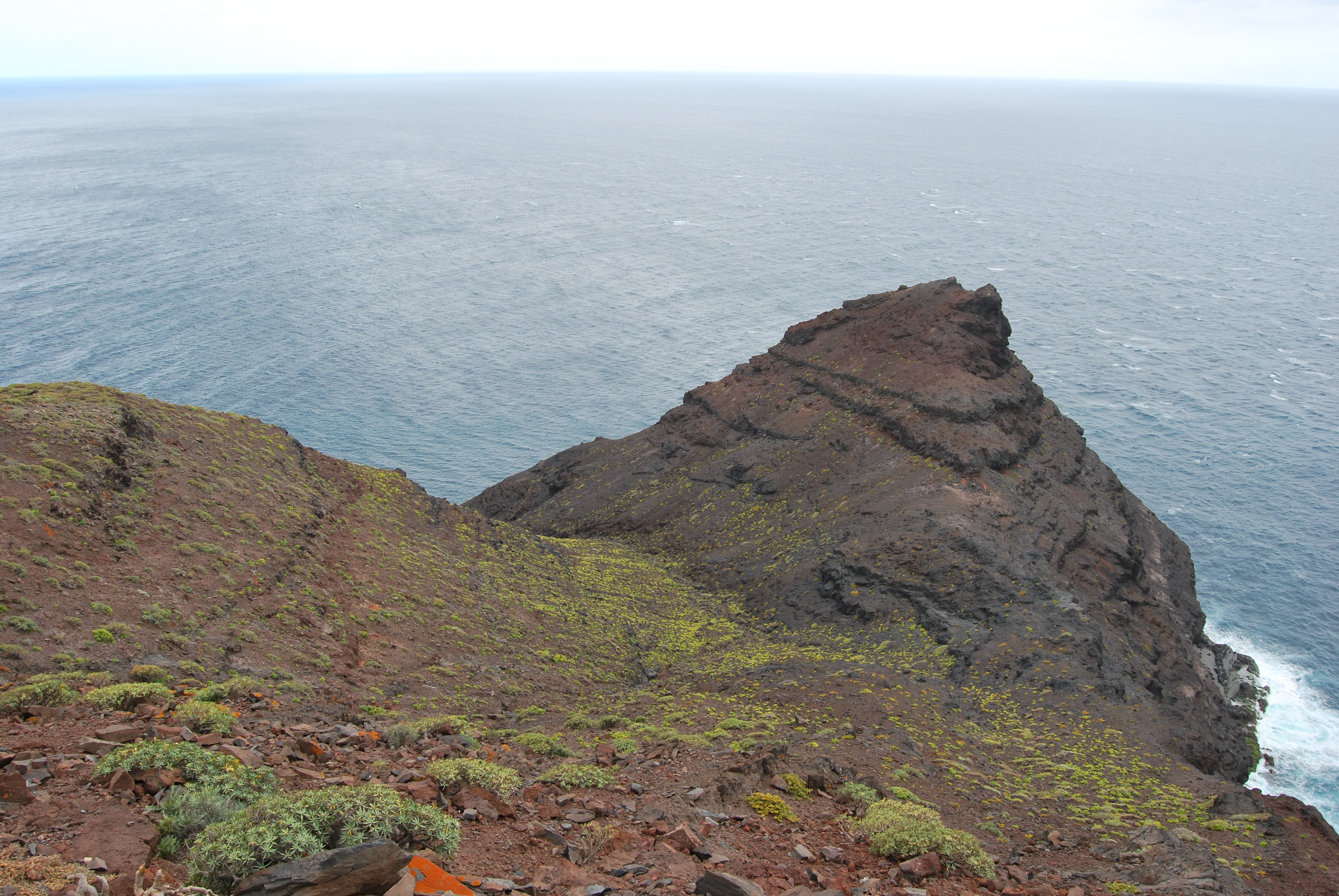Five corners of fauna interest not to be missed
Las Maciegas’ Wetland
This humid area holds a place as one of the most important wetlands in the Canaries, and occupies much of the mouth of the Ravine of La Aldea, meeting conditions that make it especially attractive to many waterfowl – residents and migrants – and many small forest birds that use this as a site for breeding, feeding and resting in an extensive forest of tarajales.
It is one of the most changeable environments of the municipality, constantly evolving according to the presence of water. In the cooler and wetter seasons, different species of herons, waders and ducks winter, arriving from cold regions in search of a better climate. In the dry period, invertebrates and resident birds are the main actors.
Guguy Crags
The steep relief of the Guguy massif is the ideal environment for most of the birds of prey that live on the island and for crows. The steep walls of its ravines and cliffs are the habitat of buzzards, kestrels, hawks, owls, and, in the past, the breeding place for ospreys, which are currently only sporadic visitors during migration.
The cliffs of Guguy are also one of the last corners on the island where small birds dependent in some way on rocky environments live, for example, the rock sparrow, known by country folk as the risquero, or the trumpeter bullfinch, pájaro moro for the locals. In addition, at least two species of chiroptera, the European free-tailed bat and Savi’s pipistrelle, take refuge in the crevices of these rocky cuttings. And on the terraces Cory’s shearwaters have established some of the most numerous breeding colonies on the island.
La Aldea Valley
The stony slopes and wide riverbed of the La Aldea Ravine give shelter to a long list of grassland and agricultural birds, a rich variety of orthoptera, the two bats mentioned in the municipality and large populations of the three native species reptiles. Of particular note is the abundance of stone curlews, pipits and shrikes, the presence of the trumpeter finch, the Eurasian collared dove and the laughing dove, and the rock sparrow, and the density of population of skinks and geckos.
Within this space there are different points of interest: the wells are a good place to watch the Spanish sparrow, the riverbed and the gentle slopes that border it support important populations of Gran Canaria lizards, Boettger’s wall geckos, West Canary skinks and stone curlew, and the woods of plocama pendula, from the coffee plant family, are of great importance for kestrels, shrikes and spectacled warblers, among many others. The diversity of grasshoppers is outstanding, and in particular, for its abundance, size and morphology, the nosey cone-headed grasshopper (Truxalis nasuta)
Inagua Massif
For many, this is the corner of greatest fauna interest. Its pine forest is home to the majority of forest birds present on the island, among them, the blue chaffinch – an ornithological jewel – and the woodpecker. Worthy of note is the variety and abundance of invertebrates, for example, the Gran Canaria Stick Grasshopper, the Gran Canaria grayling butterfly (Hyparchia wisii), the teresita or Canary Dwarf Mantis (Pseudoyersinia canariensis) or the Buprestis berthelotti jewel beetle, among many other native species.
The Inagua pine grove is the main area of distribution of the blue chaffinch in Gran Canaria, a rare and scarce bird first described for science at the beginning of the last century, which arouses the interest and sympathy of many people from all over the planet; it has become an attraction for the numerous ornithologists who dream of seeing it.
Andén Verde sea cliff
A sanctuary for seabirds. This cliff, which, as you have seen and read, is interesting from any point of view, is a vitally important space for the ocean birds that nest on the island. One of the largest colonies of Cory’s shearwaters in the Canaries finds the perfect place to reproduce on its terraces. As reproducing pairs, the presence of Bulwer’s petrels and European storm petrels is also very probable, and possibly of other previously unknown species.
Barbary falcons, crow and buzzards also breed in this rocky cut and are often the stars of spectacular scenes while interacting in the defence of their territories.

